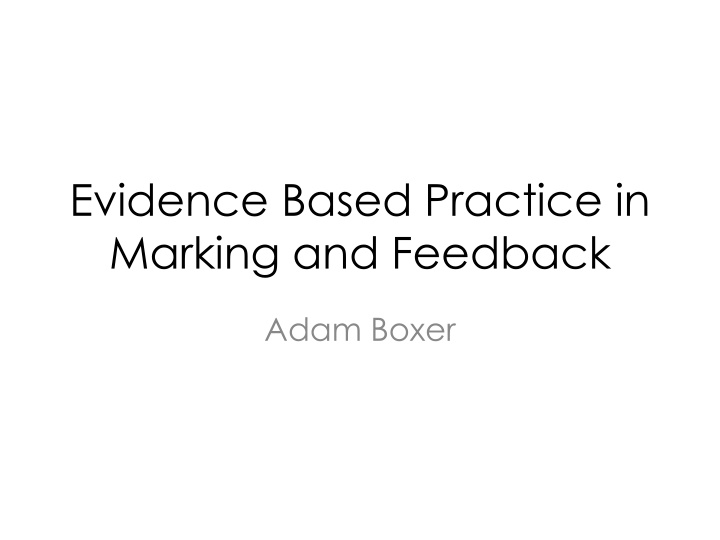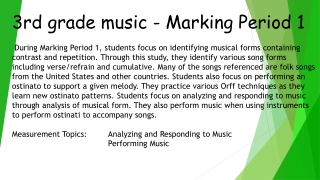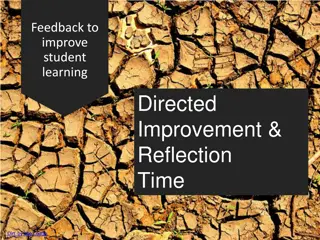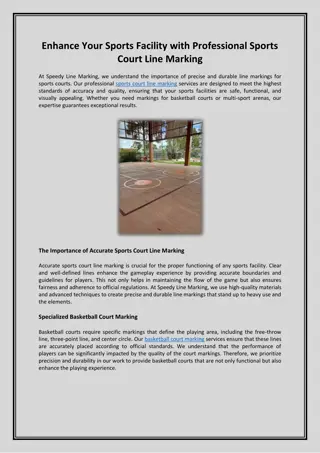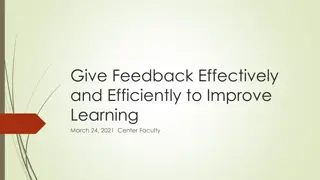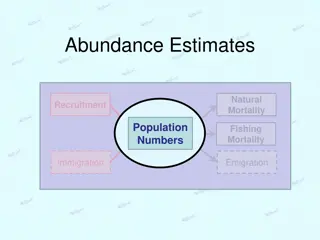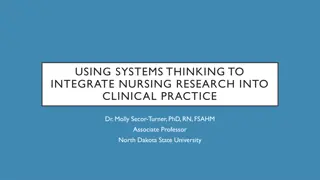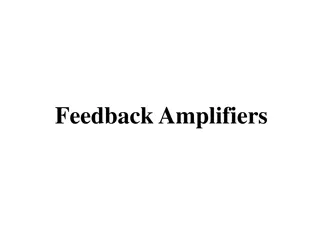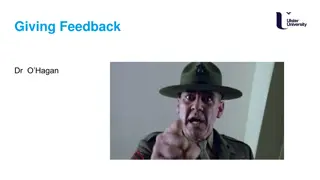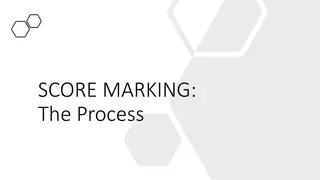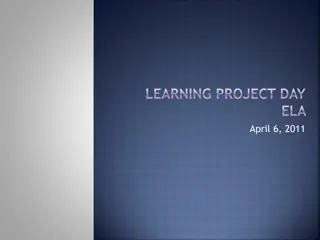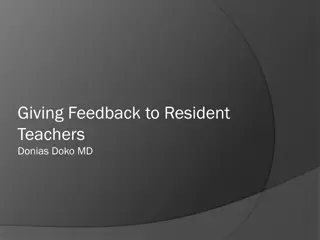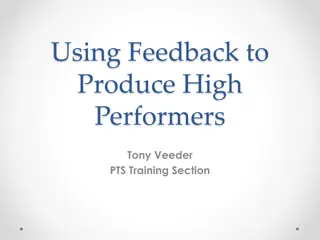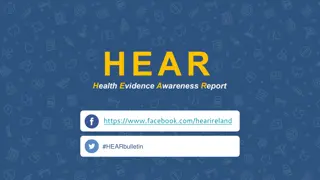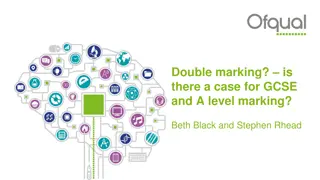Evidence-Based Practice in Marking and Feedback
Governmental priority is to equip future teachers with up-to-date research skills, while schools may use flawed methods. Explore feedback impacts, OFSTED requirements, and more, with recommendations addressing meta-analyses challenges.
Download Presentation

Please find below an Image/Link to download the presentation.
The content on the website is provided AS IS for your information and personal use only. It may not be sold, licensed, or shared on other websites without obtaining consent from the author.If you encounter any issues during the download, it is possible that the publisher has removed the file from their server.
You are allowed to download the files provided on this website for personal or commercial use, subject to the condition that they are used lawfully. All files are the property of their respective owners.
The content on the website is provided AS IS for your information and personal use only. It may not be sold, licensed, or shared on other websites without obtaining consent from the author.
E N D
Presentation Transcript
Evidence Based Practice in Marking and Feedback Adam Boxer
Governmental priority Ensuring teachers of the future are equipped with an up- to-date understanding of the latest research and a desire to use evidence to inform their teaching practice is key to improving schools. Gibb, 2017 Image result for nick gibb
Schools have become expert at faking improvement Put in a policy and use flawed evaluative methods to prove that it is having an effect Fraught with methodological problems This is not a deliberate process Coe, 2013 Image result for centre for evaluation and monitoring triumph of hope
Marking through the lens of: 1. Feedback as promoting student outcomes 2. Impact on workload 3. Ofsted s requirements 4. Other affective justifications 5. Recommendations
Problems with meta-analyses Statistical errors Mask negative effects
Imagine if a school leader said to their colleagues, We re all going to do a new thing but there s a one in three chance that we ll be making things worse ; they would be unlikely to garner much support for their new initiative (Mannion, 2017) Image result for impact chartered college of teaching
The key point Feedback is incredibly complicated Policies must take into account the full range of evidence
1b: Marking and feedback Marking is a sub-set of feedback Carries the problems as mentioned above Will only ever account for a small amount of feedback offered by teachers
Image result for eef a marked improvement 1b: Marking and feedback
1b: Marking and feedback The evidence is very clear: The quality of existing evidence focused specifically on written marking is low This is surprising and concerning bearing in mind the importance of feedback to pupils progress and the time in a teacher s day taken up by marking. (EEF, 2016) This means that any marking policy is based on no reliable evidence
1c: The cognitivist argument what have you proved by your marking? Predicated on the problem of transfer and the role of cues in memory (Willingham, 2002) Image result See also Soderstrom and Bjork (2015) on difference between learning and performance
2. Impact on workload a) Absolute workload b) Absolute cost
Absolute impact on workload government working party
Absolute impact on workload government working party Marking [is] an unhelpful burden for teachers the time it takes is not repaid in positive impact on pupils progress. teachers have less time to focus on the most important aspect of their job teaching pupils. cutting out the unnecessary frequency and depth of marking to create a manageable workload has clear benefits
My calculations 1 KS3 piece a fortnight 3 KS4 pieces a fortnight 4 KS5 pieces a fortnight (at least) 145 pieces a fortnight If each took 3 minutes (conservative!): 435 minutes 7.25 hours a fortnight ~138 hours a year Conservative estimate of 1518 hours for the department All aside from the time taken discussing marking in meetings, briefings etc.
Investments When you mark work, that time spent is one off Compare to planning (or even data) where time spent is repaid in future years It is a poor investment
Absolute cost EEF claims feedback costs are low Must take into account that you are paying teachers to mark
Image result for stephen tierney It s time to decide what not to mark this weekend Stephen Tierney, 2017
Ofsted and performance management 3a. Ofsted s use of marking 3b. Use of marking in performance management Image result for sean harford
there is remarkably little high quality, relevant research evidence to suggest that detailed or extensive marking has any significant impact on pupils learning. inspectors should not report on marking practice, or make judgements on it, other than whether it follows the school s assessment policy. (Harford, 2016)
But do they really? Case study: Michaela Community School
School Progress 8 Most recent Ofsted The Cherwell School 0.70 Outstanding (2008) Outwood Grange Academy 0.51 Outstanding (2012) Bedford Free School 0.17 Good (2016) Tadcaster Grammar 0.17 Good (2017) Meols Cop 0.06 Outstanding (2012) Heathfield Community College 0.50 Good (2016) Aylsham High 0.25 Good (2014) Haybridge High 0.30 Outstanding (2008) Hackney New School N/A Good (2015) Huntington Research School 0.28 Outstanding (2017)
Ofsted on workload Ofsted will also focus on ensuring that senior leaders consider the workload implications of policies before introducing them Image result for amanda spielman (Spielman, 2017)
JCoSSs previous inspection ensuring that all pupils work is thoroughly marked in line with the school s policy to help them improve All changes mentioned above by Sean Harford are regardless of any area for improvement identified at the previous inspection
3b Use of marking in performance management Ofsted: Inspectors will also not seek to attribute the degree of progress that pupils have made to marking that they might consider to be either effective or ineffective. Finally, inspectors will not make recommendations for improvement that involve marking (Harford, 2016)
Proxies and Teacher Performance Image result for poor proxies for learning
Government workload review: providing written feedback on pupils work has become disproportionately valued by schools [marking] is serving a different purpose such as demonstrating teacher performance or to satisfy the requirements of other, mainly adult, audiences. Too often, it is the marking itself which is being monitored and commented on by leaders rather than pupil outcomes and progress as a result of quality feedback.
Campbells Law The more any quantitative social indicator is used for social decision- making, the more subject it will be to corruption pressures and the more apt it will be to distort and corrupt the social processes it is intended to monitor (Campbell, 1976)
Goodhearts Law When a measure becomes a target, it ceases to be a good measure (Strathern, 1997)
Affective justifications It shows students you care Parents want it
My personal, anecdotal experience
Recommendations Radically de-emphasise (eliminate?) the role of marking in assessing teacher and faculty performance Any policy must be: Evidence based Subject specific Workload proportional to impact
Ultimately, the DfE can do very little to reduce workload it is up to school leaders to set a culture where staff are cared for, well-trained and valued and policies are based on common sense and the principle that we shouldn t be doing things unless they clearly help improve student outcomes. (Tomsett, 2017) Image result for john tomsett
